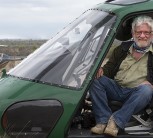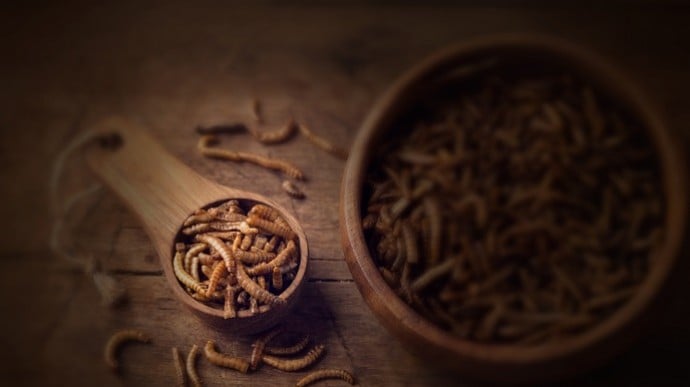An international study led by the University of Pretoria’s (UP) Professor Rudi van Aarde suggests that the mass die-off of 350 elephants in one area of northern Botswana last year could be attributed to the fencing-in of these animals.
Prof van Aarde, Emeritus Professor of Zoology and Chair of Conservation Ecology at UP’s Faculty of Natural and Agricultural Sciences, said while the causes of the deaths are “still unknown and will never be known,” the fencing-in of these elephants in one area, and their relatively high densities, probably explain why the die-off occurred.
The study, published in PeerJ – Life and Environment , suggests a “re-alignment or removal of fences that restrict elephant movements and limits year-round access to freshwater” is needed.
Botswana reported the death of 350 savannah elephants in May to June last year, sparking speculation among conservationists and the public around the cause. Carcasses were first found in the Okavango Panhandle region. Samples from the carcasses were tested by scientists in Zimbabwe, the USA, and at UP’s Faculty of Veterinary Science.
In September officials in Botswana indicated that cyanobacteria (toxic bacteria which can occur naturally in standing water and sometimes grow into large blooms known as blue-green algae) was the source of the deaths. However, Prof van Aarde said “restriction of freshwater supplies that force elephants to use pans as a water source possibly polluted by blue-green algae blooms is a possible cause, but as yet not supported by evidence.”
As part of his team’s long-running research programme, which considers regional elephant populations and their management, 10 elephants within the NG11 (an administrative district in northern Botswana where elephants and people share the land) were tracked using satellite tracking collars that were fitted on the elephants to map their movements, along with several hundred elephants in other areas across southern and eastern savanna Africa.
He explained that conditions for elephants in NG11 differ from those of non-confined elephants in the surrounding landscapes: “We show that NG11’s elephants are isolated by the Okavango River to the south-west and by fences on the other sides. NG11 imprisons the elephants, preventing their dispersal when numbers are high or when conditions may become harmful. The population growth rate within NG11 differs from those outside.”
The place in which the die-off occurred is not in a conservation area. Human-elephant conflict is high, leading to elephants avoiding the permanent freshwater sources along which people live, said Prof van Aarde.
The study argues that restricted elephant movements made this sudden die-off much more likely. “If a contagious agent were responsible, it would have implications for elephants beyond NG11 and neighbouring NG12, and the consequences of this are important for managing elephant populations across Africa.”
A team comprising UP and Pakistani scientists, including Prof van Aarde, deduced last year that malicious poisoning and poaching are unlikely to have played a role. Other species were unaffected, and elephant carcasses had their tusks intact.
“The apparent lack of fresh samples from carcasses and lockdowns of activities to contain the spread of COVID-19 add to the difficulties of establishing the cause of death. We may never have a definitive answer. Instead, the best we can do is to sketch the ecological aspects and setting of the affected area, its elephants, and its surroundings,” said Prof van Aarde.
Prof Rudi van Aarde
January 25, 2021

Emeritus Professor Rudi van Aarde obtained his undergraduate degree from the University of Pretoria (UP) and has been doing research at the University for the past 45 years.
He leads the Conservation Ecology Research Unit (CERU), a small group of scientists and technicians within the Department of Zoology and Entomology. The group is studying elephants.
His research matters, he says, because nature is the essence of life. He hopes to achieve a better world for elephants through his research.
Prof Van Aarde’s advice to school learners or undergraduate students who are interested in his field is to have passion for what they want to do. His main hobby, whether he is working or not, is photography.
 Story
Story
Cricket à la king? How about a yellow mealworm burger? Foods that may previously have evoked a ‘yuck’ response are now firmly on the menu. Research into edible insects by the Department of Zoology and Entomology at the University of Pretoria (UP) is exploring how to rear and harvest this food of the future.
 Story
Story
A single query to ChatGPT uses as much electricity as burning a light bulb for about 20 minutes. Multiply that by the millions of requests that this artificial intelligence (AI) chatbot receives each day, and the environmental impact is ominous.
 Story
Story
University of Pretoria (UP) researchers have found that the antioxidant content of certain types of tea can be likened to that found in recommended portions of fruit and vegetables.
Copyright © University of Pretoria 2025. All rights reserved.
Get Social With Us
Download the UP Mobile App